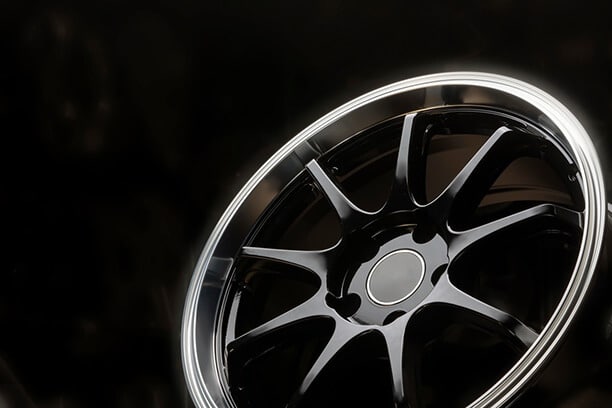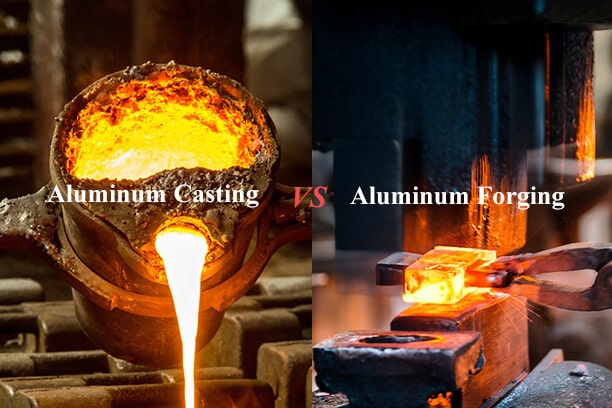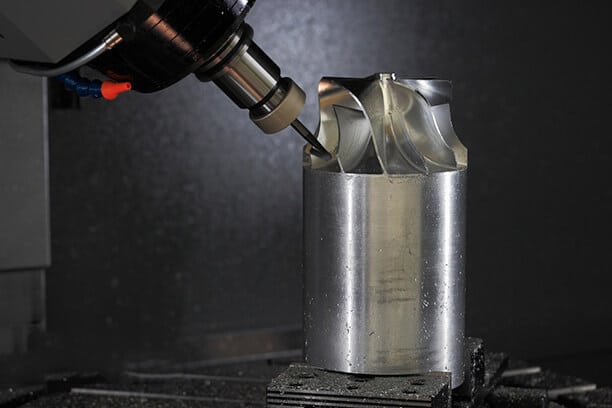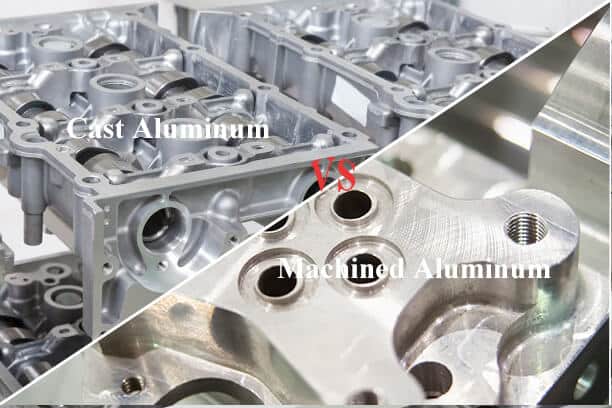In the modern automotive sector, aluminum is the predominant material used for crafting wheel rims. Steel wheels and aluminum alloy wheels are most common within the realm of car wheels. Nowadays, aluminum alloy wheels are progressively supplanting steel wheels. Diverse and appealing aluminum alloy wheels can undergo precise machining to enhance their aesthetic appeal.
The wheels of a car are subject to constant movement, which makes them susceptible to damage such as cracks or impacts with curbs. Repairing rims can be a cost-effective process that rejuvenates the aesthetic appeal of our vehicles. However, questions often arise regarding the effectiveness and complexity of the restoration process, as well as the potential risks involved.
If the primary structure of the rim is permanently damaged, it is not advisable to pursue refinishing. Conversely, if the damage is limited to insignificant parts of the rim, CNC machining can be a valuable solution, preserving resources and restoring the rims to optimal condition.
This article will provide overall insight into the technical processes involved in wheel hub operations.
Benefits of Aluminum Alloy Wheels
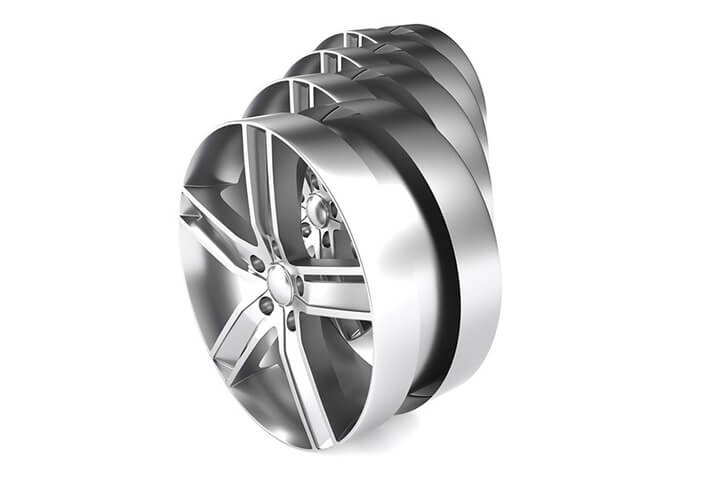
In comparison to steel car wheels, aluminum alloy wheels offer clear advantages. Aluminum alloy wheels have a smaller density, approximately one-third that of steel, making them around two-thirds lighter than steel wheels of the same volume. Studies indicate that using aluminum alloy wheels decreases vehicle weight by 10% and can improve fuel efficiency by 6% to 8%. Therefore, promoting the use of aluminum alloy wheels holds significant importance for energy conservation, emission reduction, and embracing a low-carbon lifestyle.
Aluminum boasts high thermal conductivity, whereas steel has low thermal conductivity. Consequently, under identical conditions, aluminum alloy wheels exhibit superior heat dissipation performance compared to steel wheels.
Moreover, aluminum alloy wheels are renowned for their fashionable and aesthetically pleasing appearance. Through aging, aluminum alloy can be strengthened, while cast aluminum alloy wheel hubs without aging treatment possess low strength but are easy to process and shape.
The Structural Analysis of Automotive Aluminum Alloy Wheels
In order to fulfill functional and market demands, aluminum alloy wheels are designed with various structures, including integral and multi-piece combinations. Additionally, they come in a variety of shapes such as wide spokes, narrow spokes, multiple spokes, and few spokes. For safety considerations, both the appearance and structural design of aluminum alloy wheels must adhere to safety and functional requirements. For standard passenger vehicles, one-piece aluminum alloy wheels are adequate to fulfill their performance criteria.
The structure of the car wheel hub, as depicted in the figture below, can be categorized into two parts: the rim and the wheel hub. The detailed functional analysis of each part is illustrated in it.
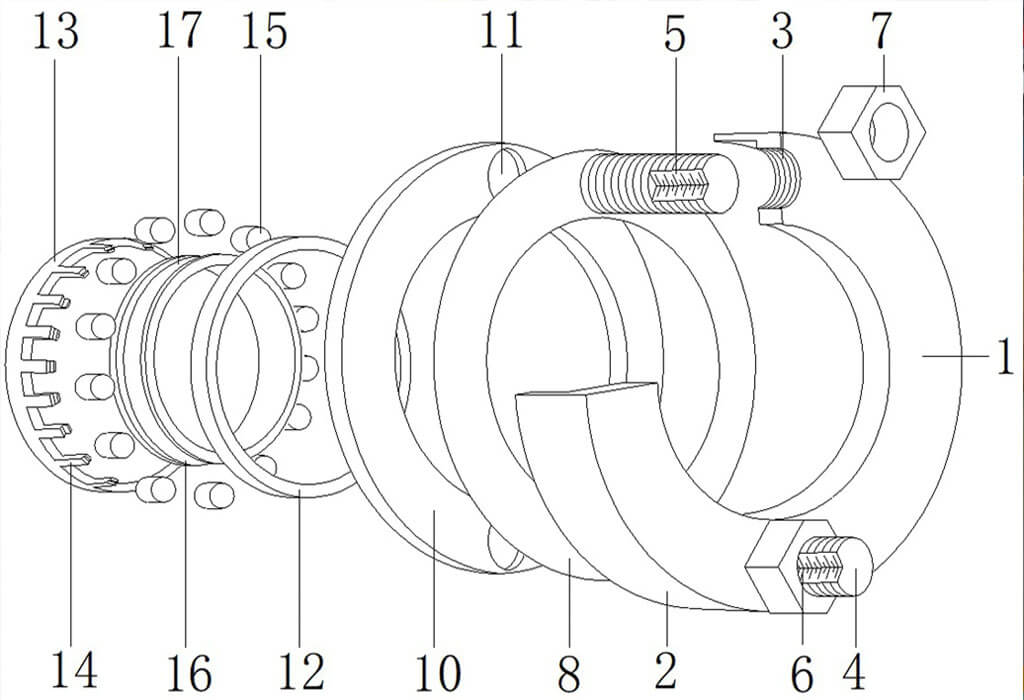
Performance Requirements for Automotive Aluminum Alloy Wheels
Aluminum alloy wheels come in various types and structures, with requirements that differ based on vehicle types and models. However, both strength and precision are fundamental shared requirements across the board. According to market research, the wheel hub should exhibit the following properties:
- Correct and appropriate material, shape, and size, allowing for optimal tire function, tire interchangeability, and universality.
- Minimal vertical and lateral vibrations, as well as low unbalance and inertia moment during driving.
- Sufficient strength, stiffness, and dynamic stability while maintaining a lightweight design.
- Effective separation from axles and tires.
- Exceptional durability.
- Manufacturing processes capable of meeting demands for stable product quality, cost-efficiency, diverse variations, and mass production.
Repairing Damaged Wheel Rims Using CNC Machining
Aluminum wheel damage can generally be categorized into three types based on the cause and extent of the damage:
- The first type occurs due to friction against the road surface and curbs when parking on the side of the road.
- The second type, involving significant deformation and distortion, commonly arises when encountering large potholes or high ridges at high speeds.
- The third type, characterized by fractures, frequently occurs in instances of high-speed shocks and impacts.
Considerations for CNC Rim Repair
The repair methods for these three situations differ, and outcomes can vary from case to case. Some repair processes may introduce new risks:
Surface wear repair is the most common situation. Given that it does not impact the supporting structure of the hub, only the surface requires refinement. In practice, the initial step involves sandblasting and polishing. The hub must be matted and polished before refinishing. The primary approach is to sandblast the wheel hub to establish a solid foundation for subsequent cosmetic treatments.
The next step involves sanding with sandpaper. Following the removal of most hub imperfections through dust-free sandblasting, finer water sandpaper is used to further polish the details.
Subsequently, the scratches are filled with aluminum putty once the wheel hub is sanded and leveled. This step is similar to applying putty when repairing a car’s sheet metal, although alloy putty, which is more intricate and pliable than that used for car sheet metal, is used for the wheel hub.
For instances where the wear gap is slightly larger and a superior filling effect is necessary, aluminum welding is utilized to fill and level aluminum alloys.
Upon completion of the filling, the restoration is polished to ensure the final metal surface approximately aligns with the original flat surface.
Finally, professional painting is conducted to conclude the process. This step is similar to painting sheet metal in most workshops, with the difference primarily lying in the scrutiny of color variations and painting uniformity.
CNC Machining for Rim Repair
The subsequent stages are directly associated with the use of a CNC machine for rim repair:
Step seven involves programming the lathe. However, in cases where certain models feature a lustrous hub surface, the brushing process necessitates polishing. These processes need to be executed on CNC machines. Attention to intricate details such as accurate curvature and spacing is imperative at this stage to guarantee a satisfactory final brushing outcome.
The eighth step entails CNC wire drawing. Once programmed, the hubs are meticulously cut on the lathe to ensure a consistent finish. It is important to note that this step, which reduces the thickness of the hub, is not suitable for recurrent repairs, as excessive rubbing of the hub’s supporting surface can significantly compromise its strength.
Next, in step nine, nano-metallic protective paint is applied. Following the preceding steps, the hub should be coated with nano-metallic paint, which will impart a lustrous finish post-firing.
The tenth step involves comprehensive polishing to achieve an enhanced sheen. When addressing the second and third types of damage, which involve changes in the hub’s structure or even cracks, repairing these situations can result in reduced strength and an incomplete internal structure of the hub compared to its pre-damaged state. As this considerably impacts safety, it is advisable not to restore the hub’s framework in such instances.
Conclusion
The CNC machine plays a crucial role in the automotive industry by facilitating the production, finishing, maintenance, and repair of vehicle wheels. It is fully computer-controlled and is capable of machining aluminum wheels with exceptional precision and quality, resulting in a flawless finish that matches the original factory standard. This technology is essential for maintaining high-quality performance and ensuring the safety of both drivers and passengers in vehicles. Moreover, it provides wheel repair solutions to the automotive aftermarket industry.
One-Stop Solution for Your Aluminum Wheel Machining and Repair Needs
At Runsom Precision, we offer a comprehensive solution for all your aluminum wheel machining and repair requirements. Our ongoing dedication to global clients revolves around continuous product innovation, quality assurance, and ensuring utmost customer satisfaction.
When it comes to manufacturing and restoring your aluminum wheels, compromising on quality is not an option. Rely on us and our advanced CNC machining technology to deliver exceptional results that surpass customer expectations. Get in touch with us today to get an instant quote.
Learn more about our CNC Wheel Machining Services
Other Articles You May Be Interested in:

